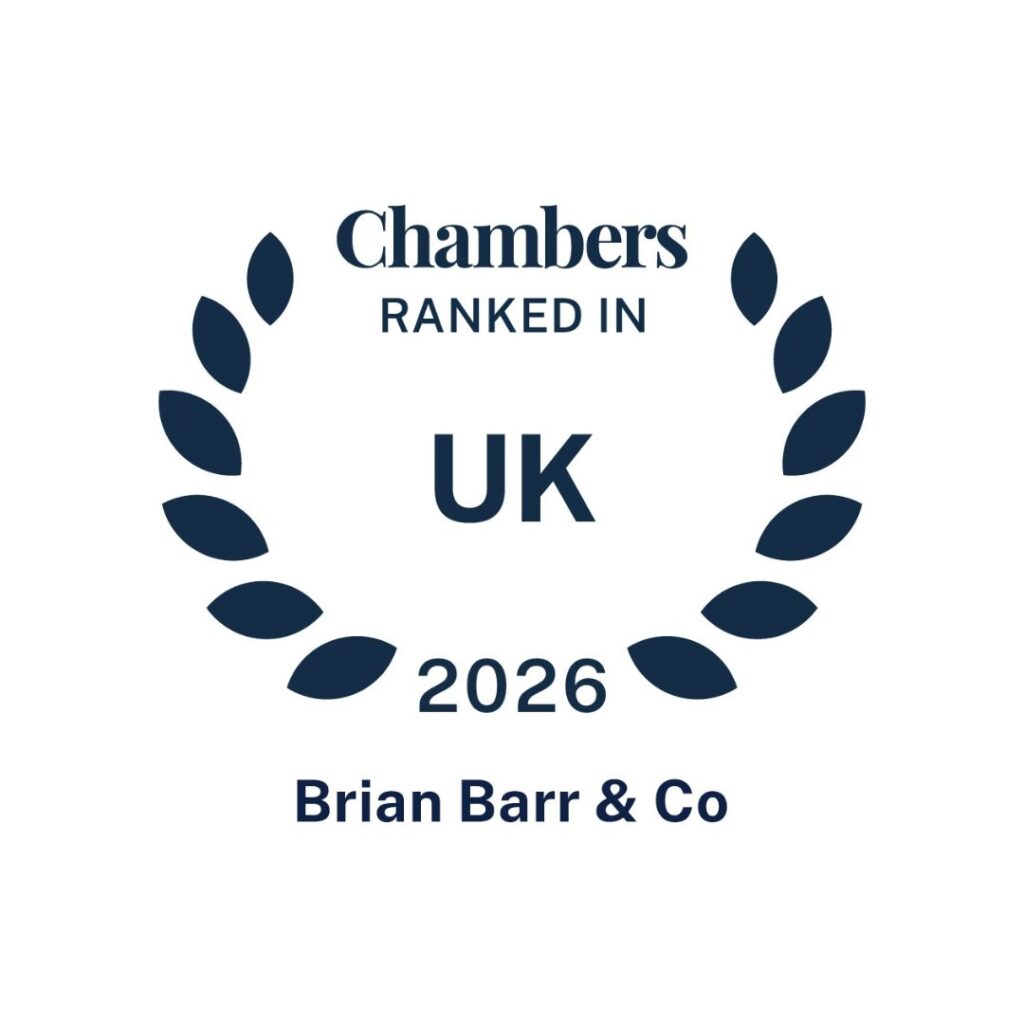

Subarachnoid Haemorrhage Compensation Claims are vital to ensure you get your life back on track.
Just because a subarachnoid haemorrhage is considered rare doesn’t diminish its importance. As a type of stroke, it is regarded as uncommon yet very serious, and it is caused by bleeding on the surface of the brain. At Brian Barr Solicitors we understand the importance of specialist legal advice relating to accidents that have resulted in a SAH.
Just because a subarachnoid haemorrhage is considered rare doesn’t diminish its importance. As a type of stroke, it is regarded as uncommon yet very serious, and it is caused by bleeding on the surface of the brain. At Brian Barr Solicitors we understand the importance of specialist legal advice relating to accidents that have resulted in a SAH.
A subarachnoid haemorrhage occurs when there is bleeding in the space surrounding the brain. This is a medical crisis, and immediate medical intervention is required. Its occurrence can be sudden and unpredicted but a delayed diagnosis or inadequate treatment can have severe consequences, including disability or even death.
A subarachnoid haemorrhage occurs when there is bleeding in the space surrounding the brain. This is a medical crisis, and immediate medical intervention is required. Its occurrence can be sudden and unpredicted but a delayed diagnosis or inadequate treatment can have severe consequences, including disability or even death.






Personal Injury Solicitor & Director, Brian Barr

Personal Injury Solicitor & Director, Brian Barr

Director, Brian Barr
At Brian Barr we are here to help our clients and their families through every step of the legal compensation process for accidents that have resulted in a subarachnoid haemorrhage. At an already stressful and highly emotive time, we do not want to add to any financial worries that you may have and that is why we often operate on a “no win, no fee” basis for SAH cases, providing peace of mind and access to justice for our clients.
Our team of specialist Brain Injury Solicitors all want to ensure you receive the compensation you deserve and our no win, no fee policy means that you won’t have to worry about upfront legal fees or expenses. The first step would be to contact us and tell us about your accident and potential serious injury claim. In nearly every claim we deal with, Brian Barr Solicitors will cover the costs of litigation, including specialist medical assessments and expert opinions, meaning there will be no financial burden or pressure on you.
If we are successful in securing compensation for your SAH accident claim, our fees will be based on an agreed-upon percentage of the awarded amount. This transparent approach ensures that you receive the majority of the compensation you rightfully deserve.
Our dedicated team of personal injury solicitors in Manchester have extensive experience in handling complex personal injury claims. We are committed to providing you with compassionate and expert legal support throughout the entire process, fighting diligently to protect your rights and secure the compensation you deserve.
If you have suffered a subarachnoid haemorrhage due to an accident caused by someone else’s negligence, contact Brian Barr Solicitors today. Let us guide you through the legal process, offering our expertise and support to ensure you get the compensation you are entitled to.
We are here for you. If you have suffered a subarachnoid haemorrhage resulting from an accident that was not your fault, don’t hesitate to contact Brian Barr Solicitors. We understand the complexities involved in SAH cases and know that dealing with the aftermath of a SAH can be overwhelming. Our compassionate team is here to provide you with the support and guidance you need throughout the legal process.
You may be entitled to receive compensation for the damages you have suffered as a result of the accident and may be eligible to claim for:
In the UK, someone can make a Subarachnoid Haemorrhage Claim on behalf of someone else in two specific circumstances:
As a Subarachnoid Haemorrhage can have devastating effects on sufferers, such as severe brain damage, it can be advisable in some cases to make a claim on behalf of the injured person. At Brian Barr Solicitors, we are experts in guiding claimants, both for their own injuries or acting as litigation friends. Contact us today for an assessment of your case, and let our experts fight for you to get justice.
The sudden onset of a severe and unbearable headache is often the trade symptom of a subarachnoid haemorrhage but there are additional crucial symptoms to be aware of:
Sudden and severe headache: A primary symptom of SAH is an excruciating headache that occurs suddenly and without any apparent cause.
Neck stiffness and pain: SAH can lead to a stiff neck and pain in the neck area. Patients may find it challenging to move their necks or touch their chin to their chest.
Nausea and vomiting: SAH can cause nausea and vomiting, which may persist even if there is no apparent stomach issue.
Sensitivity to light: The development of photophobia (a sensitivity to light) is a common symptom of SAH.
Vision Problems: Blurred or double vision, as well as a sudden loss of vision, can be warning signs of a SAH.
Sensitivity to sound: SAH can make individuals highly sensitive to sound and exposure to loud noises may intensify their discomfort.
Loss of consciousness: If someone experiences a sudden loss of consciousness, it is crucial to seek medical help immediately.
Recognising the symptoms of a SAH can make a significant difference to the patient’s future outcome.
Although a SAH is relatively uncommon compared to other medical conditions, ignoring its significance due to rarity can be perilous. Recognising the symptoms and seeking prompt medical help can significantly improve the chances of a positive outcome.
A subarachnoid haemorrhage occurs when there is bleeding in the space between the brain and the thin tissues that cover it, known as the subarachnoid space. This space is filled with cerebrospinal fluid, which cushions and protects the brain.
There are two main causes of SAH – traumatic head injury or medical negligence. If you have suffered a SAH due to an accident that was not your fault, Brian Barr Solicitors can help. We specialise in handling complex personal injury cases, including those related to subarachnoid haemorrhages.
Traumatic head injury
The most common cause of SAH is a ruptured cerebral aneurysm. A cerebral aneurysm is a weak or bulging spot on the wall of a blood vessel in the brain. When an aneurysm ruptures, it leads to bleeding into the subarachnoid space, causing a SAH.
A head injury or trauma to the brain can cause bleeding and result in a SAH, for example:
Motor vehicle accidents: High-speed collisions or accidents involving significant impact can cause a sudden jolt or blow to the head, leading to SAH.
Falls: Falls from significant heights, such as from ladders, stairs, or elevated surfaces, can result in head injuries that lead to SAH.
Sports injuries: Certain high-impact sports, such as football, rugby, boxing, or ice hockey, carry a risk of head injuries that can result in SAH.
Assaults or physical violence: Intentional acts of violence, including physical assaults, can result in traumatic head injuries that may cause SAH.
Workplace accidents: In certain occupations, such as construction, mining, or manufacturing, there is an increased risk of traumatic head injuries.
Recreational activities: Engaging in recreational activities such as cycling, skiing, or skateboarding can sometimes result in accidents that cause head injuries and subsequent SAH.
Medical negligence
Medical negligence can contribute to a subarachnoid haemorrhage if doctors or medical professionals fail to diagnose or properly treat conditions that increase the risk of SAH, such as unaddressed aneurysms or underlying vascular abnormalities. Delayed or incorrect medical interventions, misdiagnosis, or surgical errors can potentially worsen the condition, leading to SAH or its complications.
If a person experiences the symptoms of a SAH, they should be referred to a hospital for additional tests. These will usually include a CT scan, and may include a lumbar puncture to determine the patient is suffering from Subarachnoid Haemorrhage.
Any indication of SAH in a CT or LP will result in a referral to a specialist neurologist or neuroscience specialist. They may often recommend further tests, such as a deeper CT scan or an MRI.
An angiogram can sometimes be ordered, which uses a dye to highlight the blood vessels in the brain during an X-ray scan.
Depending on the severity of the Subarachnoid Haemorrhage, there are a number of treatments available.
In order to minimise the risk of secondary cerebral ischaemia, which is the reduction of blood supply to the brain, most patients are given a medicine called Nimodipine. This is given for a few weeks, until the risk of ischaemia has passed. It can be administered alongside pain medication.
Surgery can be necessary if the Subarachnoid Haemorrhage was caused by a brain aneurysm. An aneurysm can be treated and prevented from happening again with two main surgical procedures.
Coiling involves sealing off the aneurysm by blocking blood from entering it using small platinum coils, inserted via a catheter into the blood vessel.
Clipping is done via a craniotomy, which requires the surgeon to make an incision into the scalp of the patient to access the aneurysm. A metal clip is placed around the aneurysm to seal it from the blood vessel, which will heal to bypass the aneurysm.
Either procedure can be used depending on the severity and location of the aneurysm. Patients will receive close monitoring following surgery to ensure no complications arise.
We are here for you. If you have suffered a subarachnoid haemorrhage resulting from an accident that was not your fault, don’t hesitate to contact Brian Barr Solicitors. We understand the complexities involved in SAH cases and know that dealing with the aftermath of a SAH can be overwhelming. Our compassionate team is here to provide you with the support and guidance you need throughout the legal process.
You may be entitled to receive compensation for the damages you have suffered as a result of the accident and may be eligible to claim for:
In the UK, someone can make a Subarachnoid Haemorrhage Claim on behalf of someone else in two specific circumstances:
As a Subarachnoid Haemorrhage can have devastating effects on sufferers, such as severe brain damage, it can be advisable in some cases to make a claim on behalf of the injured person. At Brian Barr Solicitors, we are experts in guiding claimants, both for their own injuries or acting as litigation friends. Contact us today for an assessment of your case, and let our experts fight for you to get justice.
The sudden onset of a severe and unbearable headache is often the trade symptom of a subarachnoid haemorrhage but there are additional crucial symptoms to be aware of:
Sudden and severe headache: A primary symptom of SAH is an excruciating headache that occurs suddenly and without any apparent cause.
Neck stiffness and pain: SAH can lead to a stiff neck and pain in the neck area. Patients may find it challenging to move their necks or touch their chin to their chest.
Nausea and vomiting: SAH can cause nausea and vomiting, which may persist even if there is no apparent stomach issue.
Sensitivity to light: The development of photophobia (a sensitivity to light) is a common symptom of SAH.
Vision Problems: Blurred or double vision, as well as a sudden loss of vision, can be warning signs of a SAH.
Sensitivity to sound: SAH can make individuals highly sensitive to sound and exposure to loud noises may intensify their discomfort.
Loss of consciousness: If someone experiences a sudden loss of consciousness, it is crucial to seek medical help immediately.
Recognising the symptoms of a SAH can make a significant difference to the patient’s future outcome.
Although a SAH is relatively uncommon compared to other medical conditions, ignoring its significance due to rarity can be perilous. Recognising the symptoms and seeking prompt medical help can significantly improve the chances of a positive outcome.
A subarachnoid haemorrhage occurs when there is bleeding in the space between the brain and the thin tissues that cover it, known as the subarachnoid space. This space is filled with cerebrospinal fluid, which cushions and protects the brain.
There are two main causes of SAH – traumatic head injury or medical negligence. If you have suffered a SAH due to an accident that was not your fault, Brian Barr Solicitors can help. We specialise in handling complex personal injury cases, including those related to subarachnoid haemorrhages.
Traumatic head injury
The most common cause of SAH is a ruptured cerebral aneurysm. A cerebral aneurysm is a weak or bulging spot on the wall of a blood vessel in the brain. When an aneurysm ruptures, it leads to bleeding into the subarachnoid space, causing a SAH.
A head injury or trauma to the brain can cause bleeding and result in a SAH, for example:
Motor vehicle accidents: High-speed collisions or accidents involving significant impact can cause a sudden jolt or blow to the head, leading to SAH.
Falls: Falls from significant heights, such as from ladders, stairs, or elevated surfaces, can result in head injuries that lead to SAH.
Sports injuries: Certain high-impact sports, such as football, rugby, boxing, or ice hockey, carry a risk of head injuries that can result in SAH.
Assaults or physical violence: Intentional acts of violence, including physical assaults, can result in traumatic head injuries that may cause SAH.
Workplace accidents: In certain occupations, such as construction, mining, or manufacturing, there is an increased risk of traumatic head injuries.
Recreational activities: Engaging in recreational activities such as cycling, skiing, or skateboarding can sometimes result in accidents that cause head injuries and subsequent SAH.
Medical negligence
Medical negligence can contribute to a subarachnoid haemorrhage if doctors or medical professionals fail to diagnose or properly treat conditions that increase the risk of SAH, such as unaddressed aneurysms or underlying vascular abnormalities. Delayed or incorrect medical interventions, misdiagnosis, or surgical errors can potentially worsen the condition, leading to SAH or its complications.
If a person experiences the symptoms of a SAH, they should be referred to a hospital for additional tests. These will usually include a CT scan, and may include a lumbar puncture to determine the patient is suffering from Subarachnoid Haemorrhage.
Any indication of SAH in a CT or LP will result in a referral to a specialist neurologist or neuroscience specialist. They may often recommend further tests, such as a deeper CT scan or an MRI.
An angiogram can sometimes be ordered, which uses a dye to highlight the blood vessels in the brain during an X-ray scan.
Depending on the severity of the Subarachnoid Haemorrhage, there are a number of treatments available.
In order to minimise the risk of secondary cerebral ischaemia, which is the reduction of blood supply to the brain, most patients are given a medicine called Nimodipine. This is given for a few weeks, until the risk of ischaemia has passed. It can be administered alongside pain medication.
Surgery can be necessary if the Subarachnoid Haemorrhage was caused by a brain aneurysm. An aneurysm can be treated and prevented from happening again with two main surgical procedures.
Coiling involves sealing off the aneurysm by blocking blood from entering it using small platinum coils, inserted via a catheter into the blood vessel.
Clipping is done via a craniotomy, which requires the surgeon to make an incision into the scalp of the patient to access the aneurysm. A metal clip is placed around the aneurysm to seal it from the blood vessel, which will heal to bypass the aneurysm.
Either procedure can be used depending on the severity and location of the aneurysm. Patients will receive close monitoring following surgery to ensure no complications arise.
Read more about how we support client throughout the UK to claim compensation for their injuries or chronic pain conditions. Brian Barr Solicitors consistently achieves great results and high compensation amounts.
To start your claim, simply complete the form below and we will be in touch shortly.